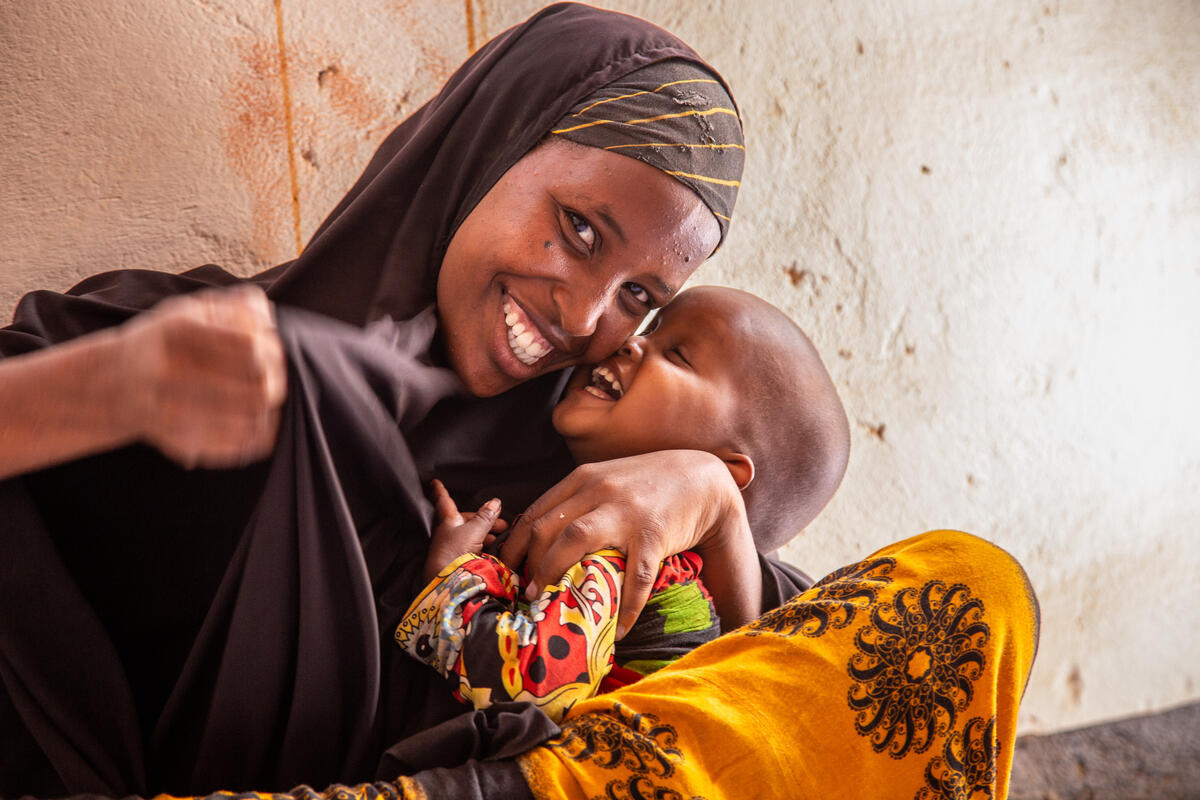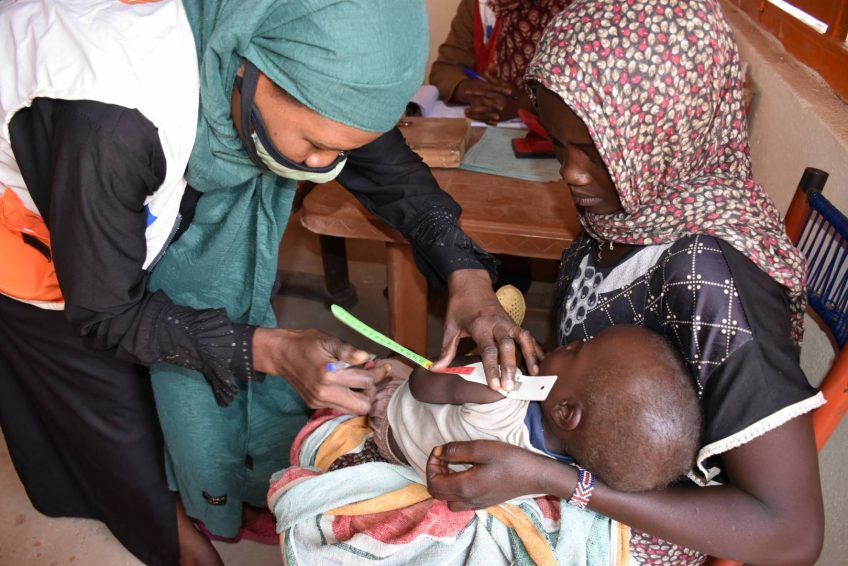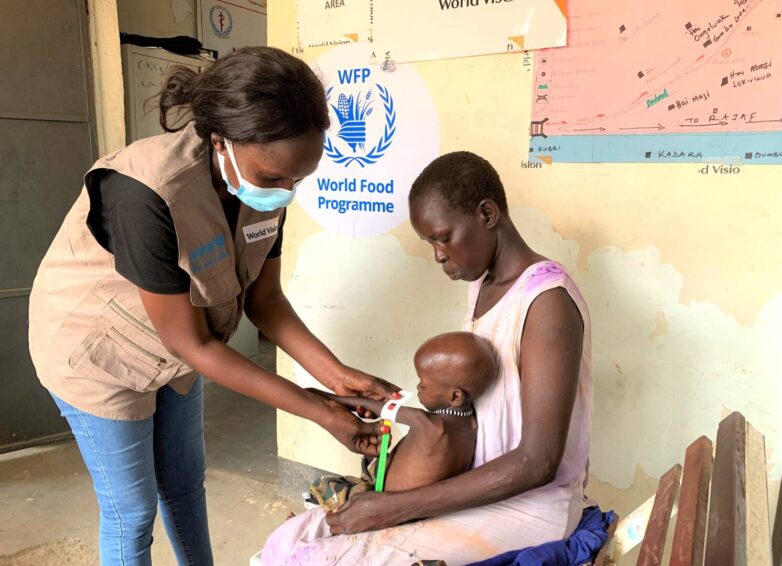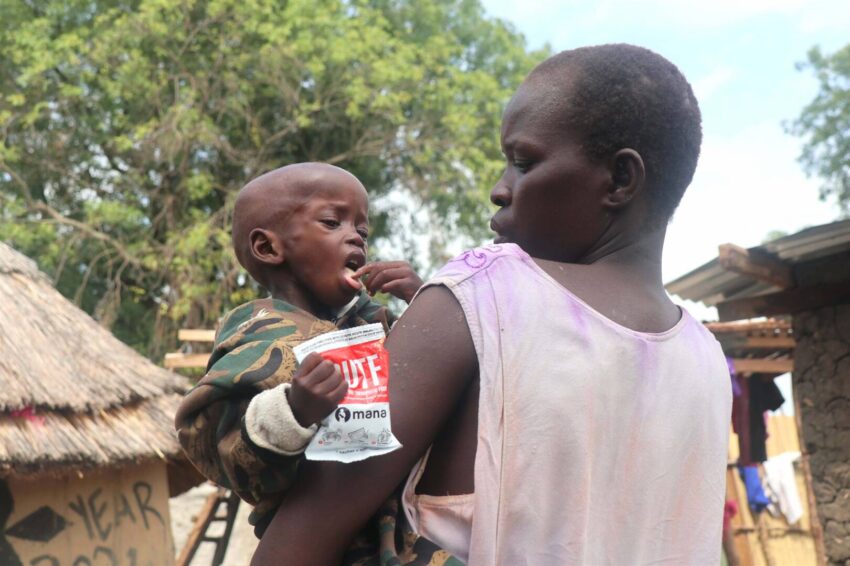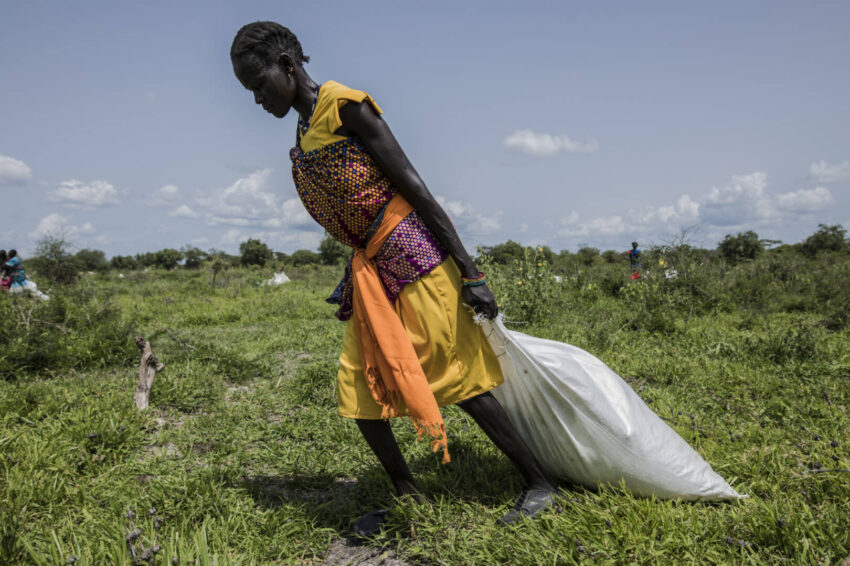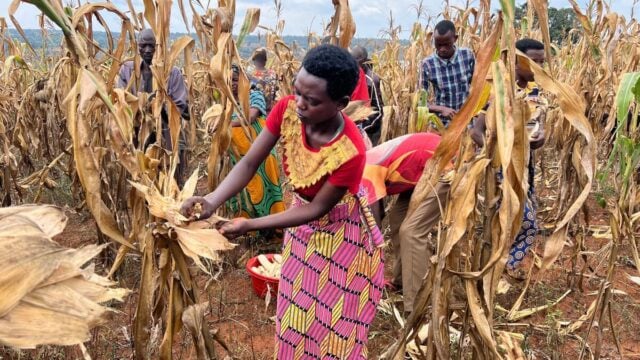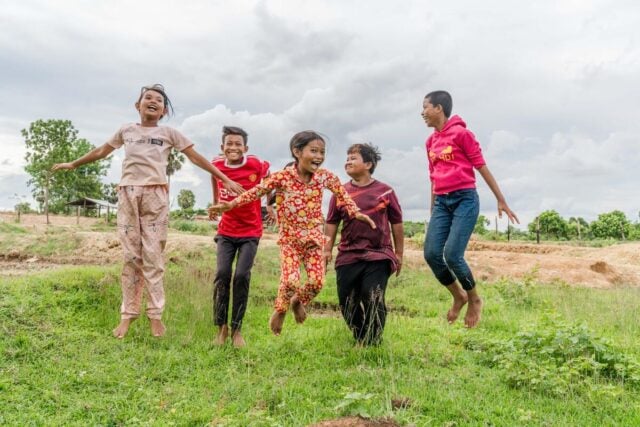A severe food crisis is intensifying across Africa, driving millions of people into a heightened risk of hunger and starvation. Fueled by a combination of factors, including the war in Ukraine, regional conflicts, extreme weather events, and the ongoing effects of the COVID-19 pandemic, hunger threatens the lives and well-being of vulnerable communities and people, particularly women and girls.
Africa’s hunger crisis: Facts, FAQs, and how to help
- Fast facts: Africa hunger crisis
- What causes hunger in Africa?
- What is famine, and how is it defined and declared?
- How are women and children affected by hunger?
- How is World Vision responding to the hunger crisis?
- How does World Vision support resiliency and self-sufficiency in communities?
- How can I help children and families impacted by the hunger crisis?
Fast facts: Africa hunger crisis
- More than 1 billion people in Africa struggle to afford a healthy diet. Addressing child hunger in Africa is critical, considering approximately 30% of children on the continent suffer from stunted growth due to malnutrition.
- An estimated 20% of the population is undernourished in Africa, with 57 million more people facing hunger since the start of the COVID-19 pandemic.
- An estimated 868 million people experienced moderate to severe food insecurity in Africa in 2022, with over one-third of those facing severe food insecurity.
- Hunger trends in Africa show that progress over the decades has abruptly reversed. After a prolonged improvement period since 2000, hunger significantly worsened between 2019 and 2022.
- In 2023, World Vision supported over 25.4 million people, including 14 million children, across 28 countries — including 18 countries in Africa.
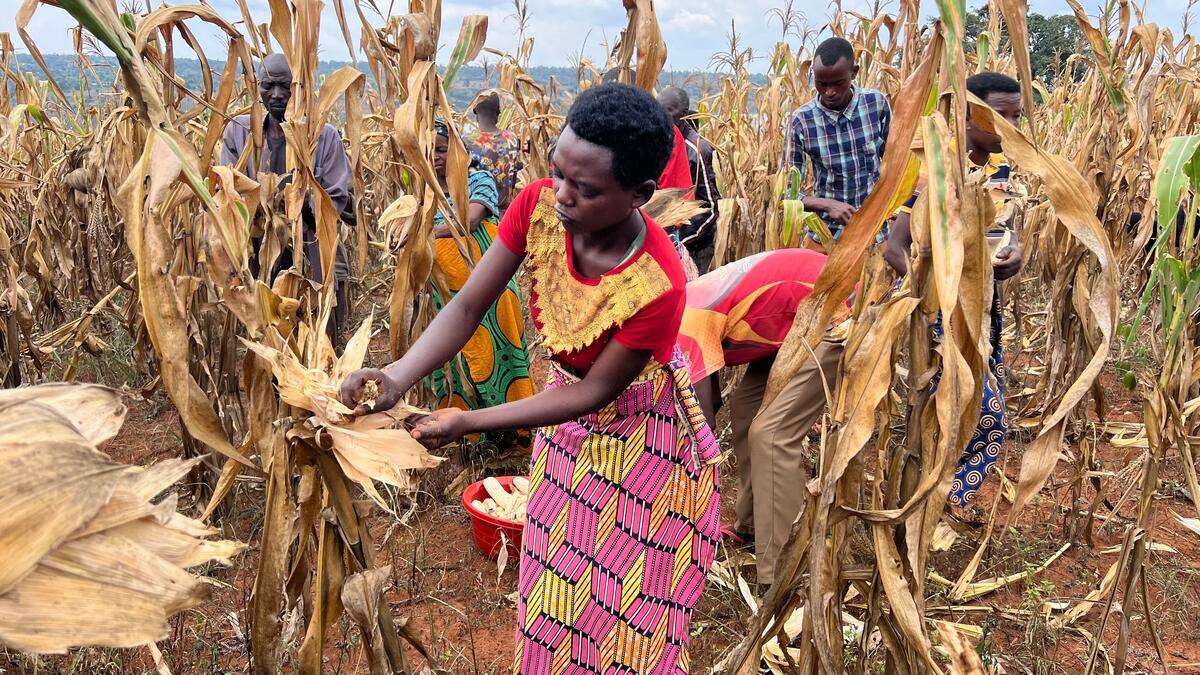
What causes hunger in Africa?
Conflict, extreme weather events, poverty, and instability collectively drive hunger in Africa. These issues lead to food shortages, limiting access to nutritious food. The ongoing effects of COVID-19 and the war in Ukraine have exacerbated these shortages.
What is famine, and how is it defined and declared?
Famine, characterized by “extreme scarcity of food,” is the absolute worst-case scenario for a food crisis in humanitarian terms. It is defined by specific technical criteria, indicating large-scale starvation, malnutrition, and death.
Criteria for declaring a famine
A food crisis transitions into a famine when specific conditions are met:
- Household food shortages: At least 20% of households in a given area face extreme food shortages and struggle to cope.
- Child malnutrition: More than 30% of children suffer from acute malnutrition.
- Mortality rate: Hunger leads to more than two deaths each day for every 10,000 people.
When a food crisis no longer meets these technical criteria, a famine is over, at least temporarily.
How are women and children affected by hunger?
Hunger can have devastating consequences for women and children, going beyond health and nutrition to include the risk of gender-based violence and sexual exploitation and abuse. The indirect impacts of the COVID-19 pandemic are exacerbating these concerns for children and communities who lack safety nets.
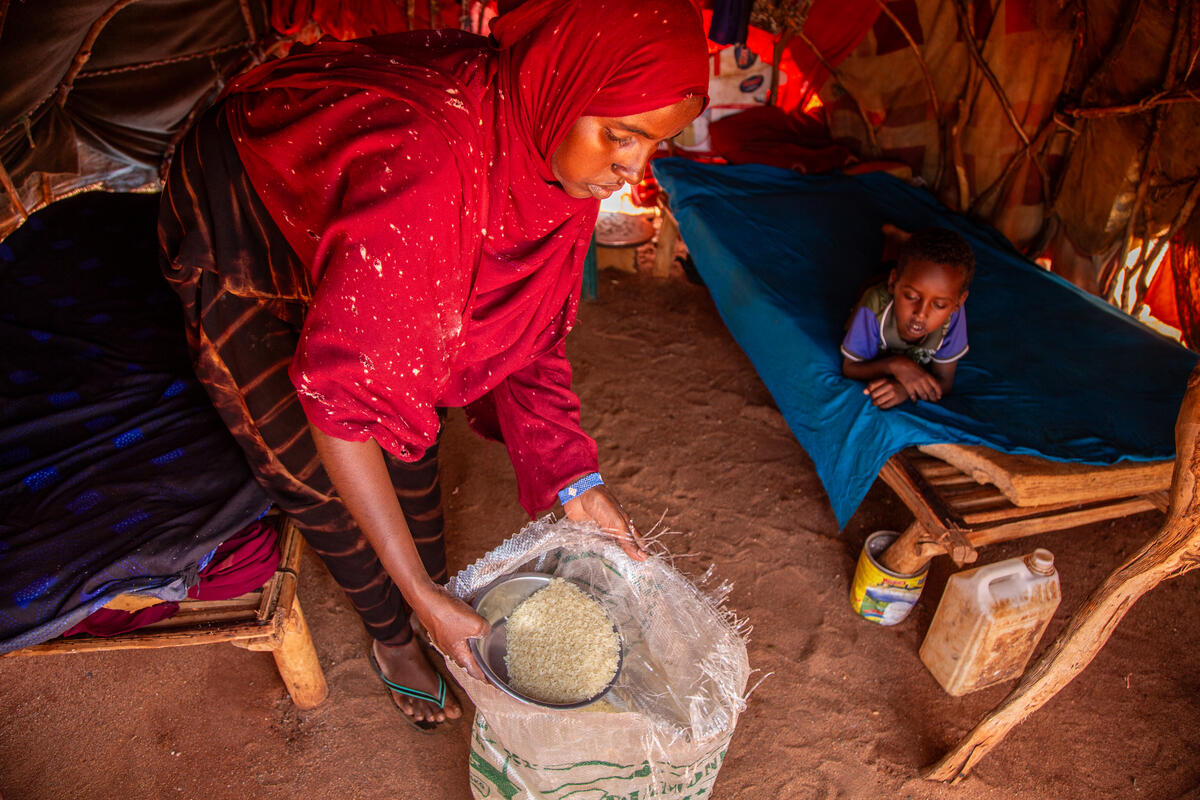
How is World Vision responding to the hunger crisis?
World Vision remains steadfast in its commitment to serving families experiencing hunger in Africa and around the world. We thank God for the progress that has been achieved as we’ve worked to adapt our programs to current realities.
As of September 2023, we had reached over 25.4 million people, including 14 million children, across 28 countries — including 18 countries in Africa — in our response to the hunger crisis. From October to December 2023 alone, we supported an additional 4.1 million people globally with life-saving food assistance.
For more than 40 years, World Vision has been delivering emergency aid and long-term assistance to families and communities affected by food crises in Africa. Here are some of the ways we help to overcome the root causes of hunger and malnutrition:
- Delivering food assistance, including emergency feeding and cash vouchers
- Diagnosing and treating maternal and child malnutrition
- Ensuring lasting access to clean water and improving sanitation to prevent water-related diseases and support crop irrigation
- Offering training in improved agriculture techniques to support farmers in diversifying livelihoods
- Rehabilitating land to improve harvests
How does World Vision support resiliency and self-sufficiency in communities?
While life-saving aid is crucial in an emergency, World Vision also prioritizes long-term solutions that build resilience and empower communities to recover from crises independently.
One key aspect of World Vision’s work is livelihood skills training, which equips families with tools they need to navigate a food crisis on their own. Here’s how World Vision is working today to prevent future food and hunger crises:
- Supporting farmers and pastoralists through market development initiatives, livestock immunizations, and training in drought-resistant crop cultivation
- Providing cash aid to help families rebuild and stimulate local economies
- Establishing saving groups and community banks, and offering financial literacy training to assist members in recovering from emergencies and preparing for future shocks
- Installing and repairing water and sanitation facilities to promote health and crop growth
- Offering business training, equipment, and materials to help families diversify their incomes and safeguard their assets from adverse weather conditions
- Providing educational support for children, enabling them to stay in school and acquire skills for a resilient future
How can I help children and families impacted by the hunger crisis?
- Pray: Join us in praying for children and families affected by the hunger crisis in Africa and around the world.
- Give: Your gift will help provide support such as emergency food aid, agricultural training, access to clean water, healthcare, and more, to vulnerable children and families.
- Sponsor a child: Sponsorship makes a lasting impact as you help equip children, families, and communities with access to life-saving essentials like nutritious food, healthcare, clean water, quality education, and spiritual nurture.
